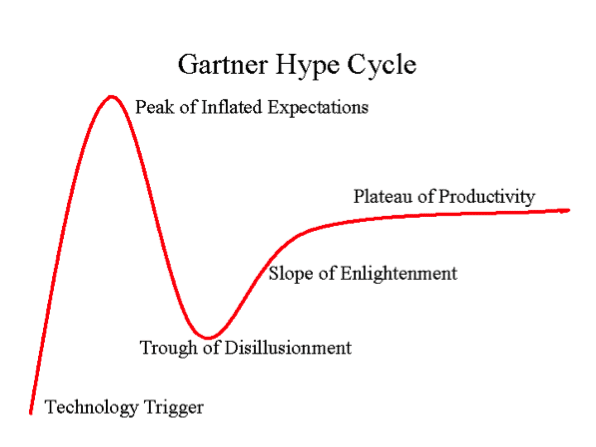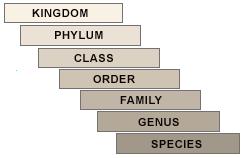Watch out world! Eric Callmann, a vet of data governance, recently joined the Semantic Arts team as a consultant. We like his fresh and unique perspective on how to use semantic technology to help manage the mass amounts of data that could potentially drive us all mad. 
We did a little Q&A with Eric to find out more about him and his take on #SemTech2013.
SA: What’s your background and how did we find you?
Eric Callmann: My background is in developing information quality programs at large information services companies. I found my way to Semantic Arts by way of a
n Information Governance Council where I met Dave McComb.
SA: What made you want to take the leap into semantics?
EC: The arena of semantics and ontologies is at the forefront of emerging, next generation tools to help us manage the larger and larger amounts of data that are being produced. Also the development of data governance programs had me thinking that as the realm of semantics grows, there is a greater need to govern and ensure high quality triples created within ontologies. I shared this with Dave and he felt the same way. As a result, I joined Semantic Arts in May and have been drinking from the semantic fire hose ever since.
SA: So we sent you to SemTech in June, what was your experience?
EC: I was fortunate to be able to attend SemTech2013. For someone who is not a diehard techie (e.g. I don’t build apps, manage databases, install hardware, etc.), rather a business person who knows how to leverage technology, the event was a way to see into the future.
SA: What do you mean by ‘seeing into the future’?
EC: What I mean by being able to see into the future is that semantic technologies is and will continue to make all of our lives on the internet and within enterprises easier to find the things we need. For example, Walmart presented their use of Semantics to improve the search experience on Walmart.com. They are leveraging publicly available information, such as Wikipedia, to help the search engine understand the context of what one is searching for. Throughout the conference there were numerous presentations about using this technology in new ways to improve analytics and develop new services. To say the least, the amount of innovation and entrepreneurship that is happening in this space is astounding. There are already new services that are being offered that use this technology such as Whisk.com that allows you to find a recipe and have your grocery list created automatically at your favorite grocery store (Note: This is only available in the UK…lucky Londoners). If Walmart is doing it, it is pretty obvious that Google and Yahoo! are leveraging this great technology in really cool ways too. More from Eric’s perspective in the future. We are excited to have Eric on board! If you have any questions for Eric, make sure to shoot him an email: [email protected]

 Let’s think about the underlying dynamics. At first there is a product or approach that purports to solve an existing problem. If it doesn’t, it falls off the radar. If it does, the implementer and often the implementee get bragging rights at conferences and magazines. They tout the benefits (let’s say, increased inventory turns) and some aspect of the approach that led to the benefit (let’s say, genetic algorithms). A few other firms pick up on the relative advantage being gained by the early adopter, and many actually get the connection between the approach or the technology (genetic algorithms) and the result (increased inventory turns). Up to this point there is no hype cycle, just good old-fashioned diffusion of innovation which has been widely studied since the introduction of hybrid corn in the 1930’s. In order to fuel a hype cycle you need someone hyping. Certainly some vendors will hype their solutions. But most customers are immune to this puffery, and can afford to sit on the sidelines. But when someone with the ability to move markets like Gartner weighs in, the industry is obligated to take notice. Customers, wary of missing out on the next big thing, wade in. But it is at this juncture that the connection between the feature (genetic algorithms in this example) and the benefit (increased inventory turns) gets severed. Vendors rush in to supply the new technology, and everyone is in too much of a hurry to worry about the benefits. The trough of disillusionment shows up, just as the bow wave of these projects crests. The projects complete (without benefit) or get cancelled. Disappointment is rampant. The dead are buried, companies move on. But a few projects persist. A few actually get the promised benefits. After a couple more implementation cycles, the patterns finally emerge about how to do this well. The technology is redeemed, and we are declared to be on the “slope of enlightenment.” We were helping clients with SOA design in the early days, and there was a time when the techniques and the benefits were actually connected. We found it amusing years later to see that Gartner had observed that SOA implementation was going through four phases to get to maturity. In our opinion, the fourth phase was really where companies should have started, were it not for the help they got from over-eager vendors on the bandwagon. The same was true with MDM and at least a dozen other hot technologies. That is the general pattern. How do we think it will play out in Semantic Technology? Who will gain and lose in the Semantic Technology hype cycle? Vendors of Semantic Technology products of course will be the immediate beneficiaries, as will any technology that can get the “Semantics Inside” stickers on their products in time for their next marketing campaign. As we saw with MDM, once the market shifted from professional services firms solving real problems to software vendors selling products, it was the beginning of the end. That’s not to say that the products are bad or unnecessary; it’s just that in thrall of the hype cycle customers tend to purchase first and plan later. The other constituents to benefit are the large professional services firms. We can reliably predict that firms with a bench will suddenly discover that they had semantic skills in-house (“how hard could this be?”). Anyone who can spell “ontologies” will soon become an expert. (I just noticed that even this has become easier: as of Word 2013 Microsoft finally included “ontologies” in their standard spelling dictionary, however, it looks like “ontologist” will have to wait for the next version.) So, who is harmed in this stage of the hype cycle? Most customers. Those who buy a product and then look for an application or those that believe what the newly minted semantic experts tell them. Also harmed are the firms who know what they are doing and have been delivering value all along. Recruiting, always difficult, will become more so as the gold rush plays out. And there will be pricing pressure as the wave of new ontologists puts commodity pricing pressure on the industry. I wasn’t looking forward to this day, but here we are. Let’s try to make the most of it and see how many companies we can get to the “plateau of productivity” while everyone else is slogging it out in the trough.
Let’s think about the underlying dynamics. At first there is a product or approach that purports to solve an existing problem. If it doesn’t, it falls off the radar. If it does, the implementer and often the implementee get bragging rights at conferences and magazines. They tout the benefits (let’s say, increased inventory turns) and some aspect of the approach that led to the benefit (let’s say, genetic algorithms). A few other firms pick up on the relative advantage being gained by the early adopter, and many actually get the connection between the approach or the technology (genetic algorithms) and the result (increased inventory turns). Up to this point there is no hype cycle, just good old-fashioned diffusion of innovation which has been widely studied since the introduction of hybrid corn in the 1930’s. In order to fuel a hype cycle you need someone hyping. Certainly some vendors will hype their solutions. But most customers are immune to this puffery, and can afford to sit on the sidelines. But when someone with the ability to move markets like Gartner weighs in, the industry is obligated to take notice. Customers, wary of missing out on the next big thing, wade in. But it is at this juncture that the connection between the feature (genetic algorithms in this example) and the benefit (increased inventory turns) gets severed. Vendors rush in to supply the new technology, and everyone is in too much of a hurry to worry about the benefits. The trough of disillusionment shows up, just as the bow wave of these projects crests. The projects complete (without benefit) or get cancelled. Disappointment is rampant. The dead are buried, companies move on. But a few projects persist. A few actually get the promised benefits. After a couple more implementation cycles, the patterns finally emerge about how to do this well. The technology is redeemed, and we are declared to be on the “slope of enlightenment.” We were helping clients with SOA design in the early days, and there was a time when the techniques and the benefits were actually connected. We found it amusing years later to see that Gartner had observed that SOA implementation was going through four phases to get to maturity. In our opinion, the fourth phase was really where companies should have started, were it not for the help they got from over-eager vendors on the bandwagon. The same was true with MDM and at least a dozen other hot technologies. That is the general pattern. How do we think it will play out in Semantic Technology? Who will gain and lose in the Semantic Technology hype cycle? Vendors of Semantic Technology products of course will be the immediate beneficiaries, as will any technology that can get the “Semantics Inside” stickers on their products in time for their next marketing campaign. As we saw with MDM, once the market shifted from professional services firms solving real problems to software vendors selling products, it was the beginning of the end. That’s not to say that the products are bad or unnecessary; it’s just that in thrall of the hype cycle customers tend to purchase first and plan later. The other constituents to benefit are the large professional services firms. We can reliably predict that firms with a bench will suddenly discover that they had semantic skills in-house (“how hard could this be?”). Anyone who can spell “ontologies” will soon become an expert. (I just noticed that even this has become easier: as of Word 2013 Microsoft finally included “ontologies” in their standard spelling dictionary, however, it looks like “ontologist” will have to wait for the next version.) So, who is harmed in this stage of the hype cycle? Most customers. Those who buy a product and then look for an application or those that believe what the newly minted semantic experts tell them. Also harmed are the firms who know what they are doing and have been delivering value all along. Recruiting, always difficult, will become more so as the gold rush plays out. And there will be pricing pressure as the wave of new ontologists puts commodity pricing pressure on the industry. I wasn’t looking forward to this day, but here we are. Let’s try to make the most of it and see how many companies we can get to the “plateau of productivity” while everyone else is slogging it out in the trough.
